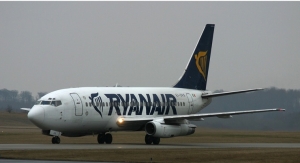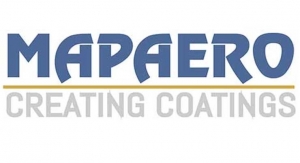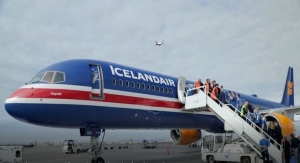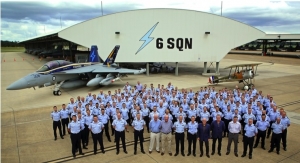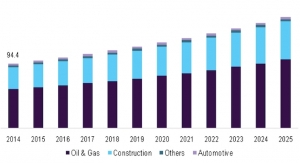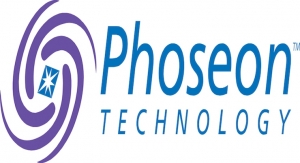09.07.18
The global thermal barrier coatings market was valued at US$ 12.86 million in 2016 and is expected to reach US$ 22.79 million by 2025, registering a CAGR of 6.7 percent over the forecast period, according to the Thermal Barrier Coatings Market, by Product Type (Metal, Ceramics, Intermetallic and others), by Coating Material (AL2O3, Ceramic YSZ, MCrAlY and others), by Technology (HVOF, Vapor Deposition and Air Plasma), by Application (Automotive, Industrial, Energy and Aerospace) published by Coherent Market Insights. Technological advancement coupled with R&D investment for the introduction of new products is projected to aid in the growth of the market. In 2014, Flame Control Coatings launched Flame Control 60-60A thermal barrier coating for spray polyurethane foam and is approved for use in occupied spaces. Increasing demand for gas turbines in aircraft, industrial and power generation applications is expected to drive the growth of the thermal coating barrier market.
Thermal Barrier Coatings (TBCs) insulate components in machinery such as gas turbines, ducting and nozzle guide vanes, aerospace parts, and other metallic surfaces that operate at relatively high temperatures. Along with efficiency at high temperature, TBCs facilitate low thermal conductivity and thermal shock, and high thermal expansion in gas turbines. Such factors are expected to increase demand for TBCs in large engine operations. Moreover, the application of gas turbines in the expanding aerospace industry is expected to boost demand for TBCs. For instance, in 2016, Boeing and Airbus manufactured combined 1,436 jets. Furthermore, increasing demand for TBCs for automotive application such as coatings for internal combustion engines and gas turbines contributes to the significant growth of the market.
The thermal barrier coatings market is classified on the basis of product types such as metal, ceramics, intermetallic, and others. The ceramic segment accounts for the largest revenue share in the market, owing to high thermal resistance characteristics of ceramic TBCs. Thermal barrier coating market is also classified on the basis of coating materials such as Al2O3, ceramic YSZ (yttria-stabilized zirconia), MCrAlY, and others. Al2O3 segment is expected to account for the largest market share, over the forecast period owing to low thermal conductivity and high thermal stability of Al2O3 coatings. Moreover, alumina provides chemical inertness and strong hardness, which is essential in manufacturing components.
TBCs market is further segmented on the basis of technology as HVOF (high-velocity oxy-fuel), vapor deposition, and air plasma technology. HVOF technology segment accounts for the highest revenue share as the technology enables the use of various coating materials such as ceramics, metals, and other alloys to provide coatings. The coating applied through HVOF technology offers high corrosion resistance and high adherence properties and fine-as-sprayed surface finishes, and low oxide levels. This market is segmented on the basis of application such as automotive, industrial, energy, and aerospace.
North America is the most dominant region in the global thermal barrier market and was valued at $3.65 billion in 2016. The growth of the market in North America is driven by growing technological advancement such as reduction of in-cylinder heat, thermal fatigue protection of metal surface and reduction of emissions, increasing demand for gas turbine, and lead the market in thermal barrier coatings application. These coatings aid in operating at higher temperatures leading to increased efficiency, and reduce CO2 emissions.
Asia Pacific is the second largest region in terms of market share in the global thermal barrier coatings market. This is attributed to increasing demand for global power and cleaner solutions and growth of industrial and automotive sectors in the region. The auto-components industry in India is expected to register a turnover of US$ 100 Billion by 2020. Countries such as India and China are expected to contribute significantly to the growth of the market owing to increasing number of power generation projects and demand for vapor deposition technology. Europe market is expected to show a significant growth owing to growth in energy and aerospace sectors in the recent past.
The thermal barrier coatings market was valued at $12.86 Billion in 2016 and is expected to expand at a CAGR of 6.7 percent, in terms of revenue, over the forecast period (2017-2025).
North America is expected to retain its dominance in the thermal barrier coatings market over the forecast period. This is mainly attributed to the increase in sales of automobiles and technological advancement. In 2016, 17.6 million trucks and cars were sold according to the sales tracker Autodata, which is a slight increase over 17.5 million trucks and cars in 2015. In Asia Pacific, growing automobile and industrial sectors, are projected to aid in the growth of thermal barrier coatings market. The players in the global thermal barrier coatings market are primarily focusing on R&D activities to develop advanced thermal barrier coatings.

Thermal Barrier Coatings (TBCs) insulate components in machinery such as gas turbines, ducting and nozzle guide vanes, aerospace parts, and other metallic surfaces that operate at relatively high temperatures. Along with efficiency at high temperature, TBCs facilitate low thermal conductivity and thermal shock, and high thermal expansion in gas turbines. Such factors are expected to increase demand for TBCs in large engine operations. Moreover, the application of gas turbines in the expanding aerospace industry is expected to boost demand for TBCs. For instance, in 2016, Boeing and Airbus manufactured combined 1,436 jets. Furthermore, increasing demand for TBCs for automotive application such as coatings for internal combustion engines and gas turbines contributes to the significant growth of the market.
The thermal barrier coatings market is classified on the basis of product types such as metal, ceramics, intermetallic, and others. The ceramic segment accounts for the largest revenue share in the market, owing to high thermal resistance characteristics of ceramic TBCs. Thermal barrier coating market is also classified on the basis of coating materials such as Al2O3, ceramic YSZ (yttria-stabilized zirconia), MCrAlY, and others. Al2O3 segment is expected to account for the largest market share, over the forecast period owing to low thermal conductivity and high thermal stability of Al2O3 coatings. Moreover, alumina provides chemical inertness and strong hardness, which is essential in manufacturing components.
TBCs market is further segmented on the basis of technology as HVOF (high-velocity oxy-fuel), vapor deposition, and air plasma technology. HVOF technology segment accounts for the highest revenue share as the technology enables the use of various coating materials such as ceramics, metals, and other alloys to provide coatings. The coating applied through HVOF technology offers high corrosion resistance and high adherence properties and fine-as-sprayed surface finishes, and low oxide levels. This market is segmented on the basis of application such as automotive, industrial, energy, and aerospace.
North America is the most dominant region in the global thermal barrier market and was valued at $3.65 billion in 2016. The growth of the market in North America is driven by growing technological advancement such as reduction of in-cylinder heat, thermal fatigue protection of metal surface and reduction of emissions, increasing demand for gas turbine, and lead the market in thermal barrier coatings application. These coatings aid in operating at higher temperatures leading to increased efficiency, and reduce CO2 emissions.
Asia Pacific is the second largest region in terms of market share in the global thermal barrier coatings market. This is attributed to increasing demand for global power and cleaner solutions and growth of industrial and automotive sectors in the region. The auto-components industry in India is expected to register a turnover of US$ 100 Billion by 2020. Countries such as India and China are expected to contribute significantly to the growth of the market owing to increasing number of power generation projects and demand for vapor deposition technology. Europe market is expected to show a significant growth owing to growth in energy and aerospace sectors in the recent past.
The thermal barrier coatings market was valued at $12.86 Billion in 2016 and is expected to expand at a CAGR of 6.7 percent, in terms of revenue, over the forecast period (2017-2025).
North America is expected to retain its dominance in the thermal barrier coatings market over the forecast period. This is mainly attributed to the increase in sales of automobiles and technological advancement. In 2016, 17.6 million trucks and cars were sold according to the sales tracker Autodata, which is a slight increase over 17.5 million trucks and cars in 2015. In Asia Pacific, growing automobile and industrial sectors, are projected to aid in the growth of thermal barrier coatings market. The players in the global thermal barrier coatings market are primarily focusing on R&D activities to develop advanced thermal barrier coatings.




